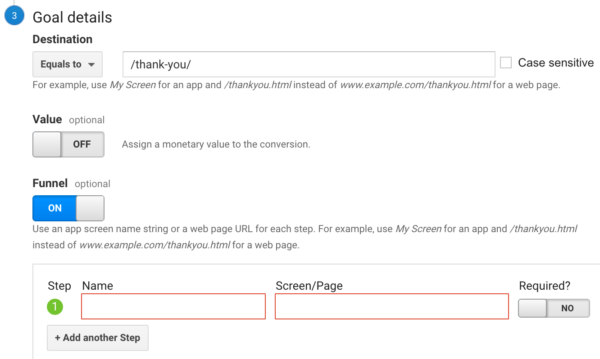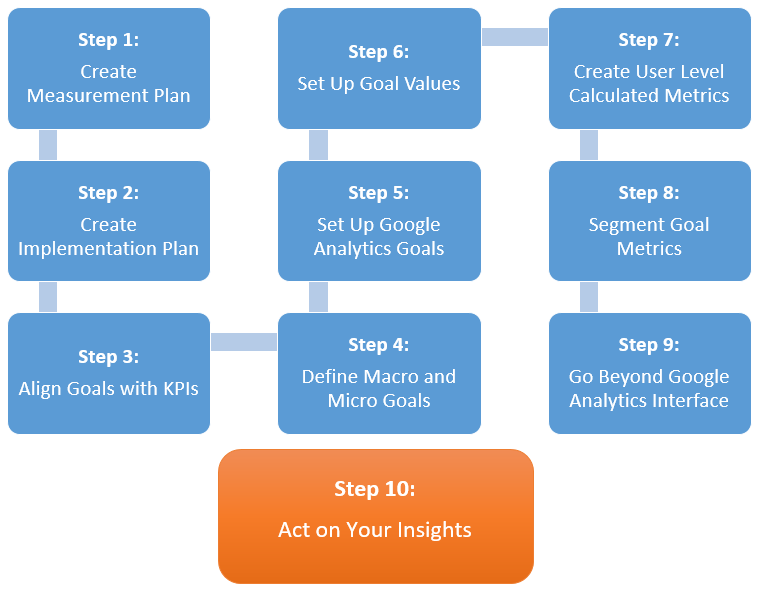Discovering What Data Is Google Analytics Goals Unable to Track
Discovering What Data Is Google Analytics Goals Unable to Track
Blog Article
Debunking Google Analytics Limitations: Discover What Information Goals Can not Track
In the realm of digital analytics, Google Analytics stands as a powerful tool that provides beneficial understandings into site efficiency and individual habits. Among its capabilities, there exist constraints that commonly go unnoticed. Recognizing what Google Analytics can not track is essential for a thorough grasp of data analysis and decision-making processes. From the intricacies of user interaction with vibrant material to the intricacies of cross-device user trips, these limitations clarified locations that may continue to be covered from traditional analytics perspectives. By deciphering these restraints, a clearer image arises, permitting more educated methods and improved insights right into individual involvement and conversions.

User Interaction With Dynamic Web Content
User communication with vibrant web content plays an essential role in understanding user behavior on sites and optimizing the overall individual experience. Dynamic web content describes components on a page that can transform without the demand for a complete page reload. This includes interactive elements such as pop-ups, sliders, forms, and video clips that reply to customer activities in real-time. By tracking customer communications with dynamic content, website owners can gain valuable understandings into customer interaction, choices, and behaviors.
Google Analytics offers various tools to track customer communications with vibrant content, such as event tracking and virtual pageviews. Event monitoring enables you to monitor details individual actions, like clicking a switch or enjoying a video clip, giving data on how users communicate with dynamic aspects. Virtual pageviews can be used to track interactions that do not lead to a brand-new page tons, supplying a comprehensive view of individual interaction with vibrant material. By examining this data, internet site owners can make educated decisions to improve individual experience and drive conversions.
Cross-Device Customer Journeys
Exactly how can modern analytics devices track the complicated courses users take across numerous gadgets in their on-line journeys? Cross-device customer journeys provide a significant difficulty for tracking and assessing user actions accurately. As individuals connect with web sites or apps making use of different tools such as desktops, mobile phones, and tablets, it comes to be essential to understand how they relocate in between these platforms to optimize customer experience efficiently.
Google Analytics faces limitations in tracking cross-device user journeys as a result of personal privacy issues and technical restraints - what data is google analytics goals unable to track. While it can provide understandings right into individual devices' communications, tracking a seamless user journey throughout numerous tools remains a challenge. This limitation can result in incomplete data and fragmented individual insights, making it hard for organizations to create a unified sight of the client trip
To address this problem, businesses can utilize advanced analytics devices that offer cross-device monitoring capabilities, allowing them to acquire a more holistic understanding of customer habits. By leveraging these tools, services can link the void in tracking cross-device individual trips and enhance their digital strategies for a seamless individual experience.
Offline Conversions and Acknowledgment
As services browse the challenges of tracking cross-device individual journeys, another crucial facet to consider is the world of offline conversions and acknowledgment in the world of information analytics. While Google Analytics offers valuable insights right into online customer habits, it fails when it involves tracking conversions that occur offline. This limitation poses a considerable challenge for services that have both online and offline sales networks.
Offline conversions, such as acquisitions made in physical shops or through telephone call facilities, are necessary to comprehending the full consumer journey. Without the capability to connect these offline conversions to specific on the internet interactions, organizations may battle to properly gauge the influence of their electronic marketing initiatives.
To address this space, organizations can explore alternate solutions such as integrating CRM systems with on the internet analytics devices or utilizing unique coupon codes that can be visite site traced back to online campaigns. By find here bridging the space between online and offline data, organizations can get a much more thorough understanding of their customers' actions and boost their overall marketing approaches.
Individual User Identification
In the realm of information analytics, the ability to precisely identify individual users throughout various on the internet touchpoints is an important obstacle for companies seeking to customize and enhance their marketing techniques. While Google Analytics provides valuable insights into user behavior and communications, it drops short in making it possible for the recognition of specific individuals as a result of privacy issues and technological constraints. Google Analytics utilizes distinct identifiers such as cookies to track individual sessions and habits, yet these do not equate to determining individual users in an individual feeling.

Data From Secure Pages
Regardless of the enhancing prevalence of safe and secure pages on web sites, acquiring information from these encrypted resources presents a distinct difficulty for electronic analytics systems like Google Analytics. Safeguard web pages, shown by HTTPS in the URL, secure information exchanged between the user's web browser and the site's server to guarantee personal privacy and protection. While this encryption is vital for protecting delicate details, it likewise postures restrictions for tracking individual habits and event analytics information.
Google Analytics encounters challenges in collecting in-depth information from protected pages because of the file encryption protocols in area. Therefore, specific information factors such as recommendation sources, keyword searches, and even some customer communications may not be completely captured when individuals access a website with a browse this site secure link. This limitation can influence the accuracy and efficiency of the data analysis, causing gaps in understanding customer behavior and preferences on protected pages.
To browse this difficulty, digital analysts might need to discover different tracking approaches or leverage various other tools specifically designed to collect insights from secure web pages. By adapting strategies to fit these limitations, services can still derive beneficial analytics in spite of the constraints presented by encrypted connections.
Conclusion
In final thought, Google Analytics has limitations in tracking individual communication with vibrant content, cross-device customer trips, offline conversions, private user recognition, and information from secure web pages. In spite of its important understandings, Google Analytics may not supply a total image of customer interaction throughout numerous touchpoints.
Individual communication with dynamic material plays an essential role in understanding customer behavior on websites and enhancing the total individual experience. By tracking individual communications with vibrant web content, web site owners can acquire useful understandings into individual involvement, preferences, and actions.
Google Analytics utilizes distinct identifiers such as cookies to track customer sessions and actions, but these do not relate to determining private customers in an individual sense.
As a result, specific information factors such as recommendation sources, keyword searches, and even some individual communications might not be totally captured when customers access a web site through a safe and secure link.In conclusion, Google Analytics has restrictions in tracking user communication with vibrant material, cross-device customer trips, offline conversions, individual customer identification, and data from secure pages.
Report this page